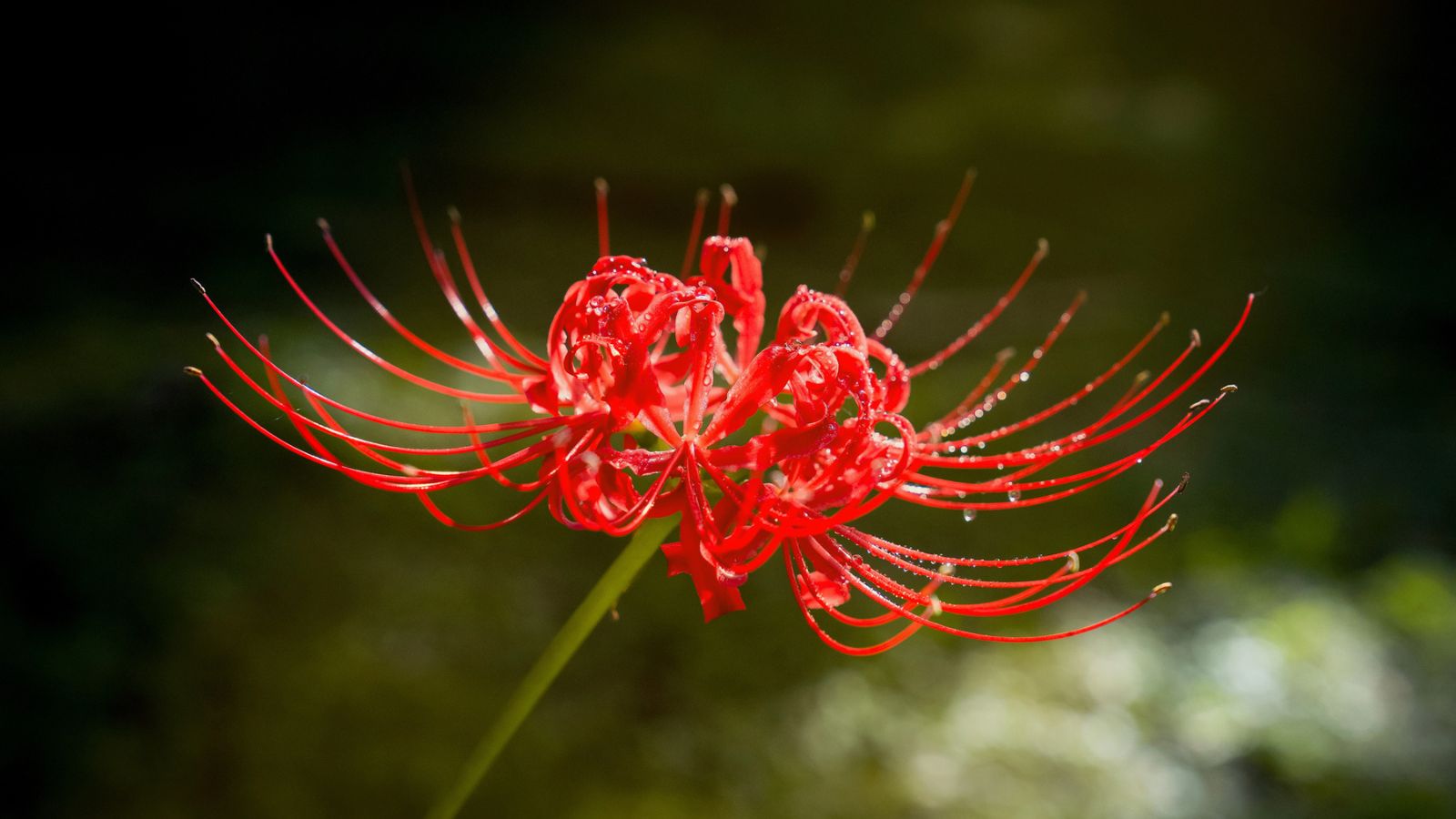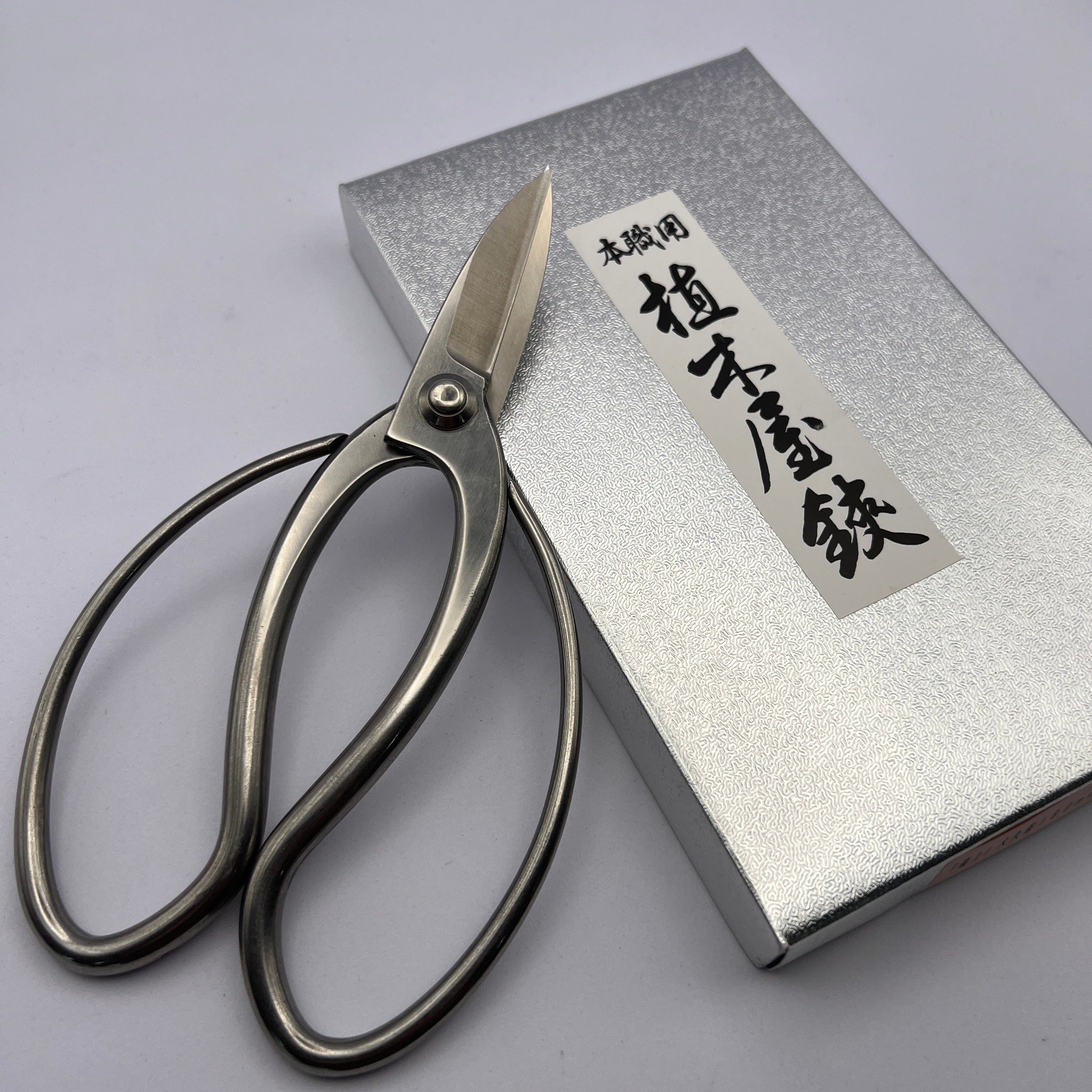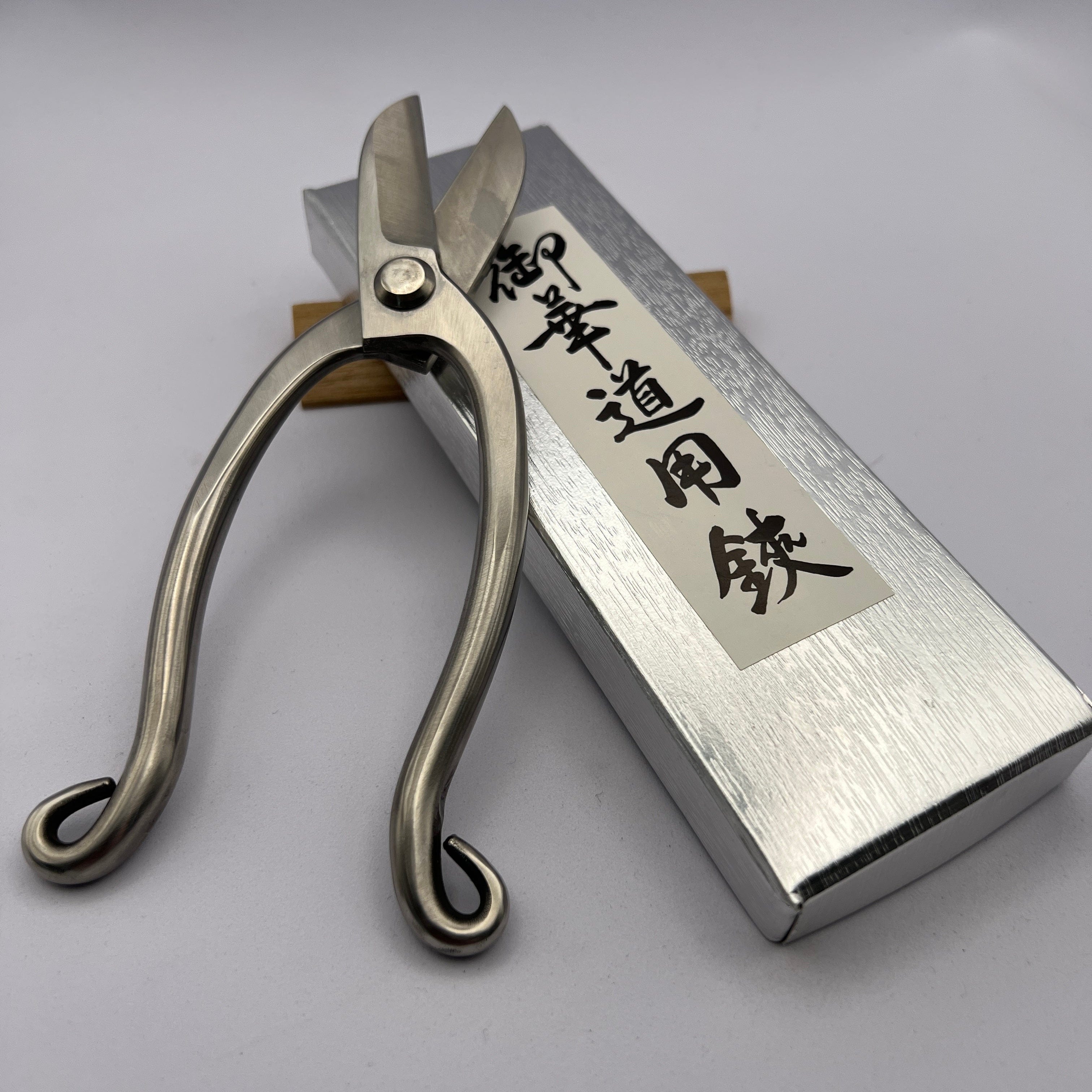Introduction – A Bloom that Speaks Without Words
In late September, as the heat of summer fades into the crisp air of autumn, brilliant clusters of red spider lilies known in Japan as 彼岸花 (higanbana, “equinox flower”) suddenly blaze into bloom. Their long, curved stamens resemble spider legs, while their intense red seems to glow against green rice paddies and temple paths.
Yet, behind this beauty lies a story steeped in farewell, impermanence, and spiritual passage, a language of flowers that speaks to the human heart.
If you're looking to care for spider lilies of your own, don't forget to get a pair of flower scissors!
Botanical and Practical Insights
Identifying the Flower
The red spider lily is botanically Lycoris radiata, a perennial bulb plant originating from China and Korea, and also found in Nepal. In Japan, it thrives along the edges of agricultural fields and in terraced fields (tanada), often planted to create a natural barrier.
A Practical Role in the Fields
Historically, the bulbs were placed along rice paddies to deter pests and moles thanks to the plant’s toxic properties. These alkaloids make the plant unsafe for consumption, so while it is mesmerizing to look at, it’s best admired without touching. The toxicity of the bulbs (containing lycorine) also means that the flowers are rarely picked or brought into the home.
Where to See Red Spider Lilies in Japan
- Kubono, Ehime Prefecture: Famous for sweeping rivers of crimson flowers.
- Butsuryu-ji Temple, Nara: Blossoms frame ancient gates and moss-covered gravestones.
- Kawagoe Aquatic Park, Saitama: Thousands of red flowers line the water’s edge each September.
- Hamamatsu Flower Park, Shizuoka: A highlight among the park’s autumn blooms.
- Eriyama Rice Terraces, Saga: Clusters of red lilies contrast with golden rice plants.
These sites attract photographers, nature lovers, and those seeking to experience the full cultural atmosphere of higanbana season.

Color Variations and Their Meanings
While the classic higanbana is red, other colors carry unique symbolic shades:
- Red spider lily: Passion, final goodbyes, protection in the afterlife, and the bridge between worlds.
- White spider lily: Purity, renewal, spiritual transition, and sometimes mourning.
- Pink spider lily: Love, gentle memories, friendship, and wishing someone success.
- Yellow spider lily: Success, joy, optimism, wisdom, and everlasting friendship.
- Blue spider lily: Mystery, unattainable dreams, transformation (primarily fictional or symbolic).
- Black spider lily: Power, pride, hidden beauty, and mourning.
These meanings are often echoed in Japanese art and poetry, where a single blossom color can deepen the mood of a scene.
Cultural and Historical Significance
The Equinox Connection
In Japan, higanbana bloom almost exactly around the autumn equinox (higan), a Buddhist observance honoring ancestors. This uncanny timing links them to ancestral honor, farewell, and the transient nature of life. During the Higan festival, families visit graves, offer incense, and are greeted by clusters of these flowers.
Temples, Graveyards, and Farewells
Their vibrant red is often seen lining graveyards and temple paths. This placement isn’t only symbolic, it also historically protected sacred grounds from burrowing animals due to the plant’s toxicity.
Life, Death, and Rebirth
In Buddhist thought, the flower can represent the crossing between this life and the next. Its brief, leafless bloom mirrors the Japanese appreciation of seasonal charm (kisetsukan) and the understanding that beauty often lives in impermanence. The red spider lily’s sudden emergence and rapid fading are a reminder that all things are temporary, echoing the Buddhist concept of impermanence (mujo).

Occasions and Appropriate Uses
In modern Japan, red spider lilies are rarely used in bouquets for joyful events. Instead, they are a poignant choice for:
- Funerals and memorial services: Symbolizing farewell, remembrance, and safe passage into the afterlife.
- Floral tributes at gravesites or caskets: Honoring the departed.
- Religious ceremonies: Marking seasonal change or paying respect to ancestors.
- Autumn festivals: Celebrating seasonal blooms and the cycle of life and death.
Red Spider Lily in Popular Culture and Media
Anime, manga, and online games often use higanbana as a visual cue for themes like death, loss, longing, and spiritual mystery. For example, a lone higanbana swaying in the wind might appear just before a dramatic character farewell or to foreshadow an impending twist. In “Demon Slayer,” the red spider lily is used to symbolize death and chaos, visually reinforcing the story’s themes.
Some famous visual settings like the Kubono red spider lilies in Ehime have inspired fictional landscapes that anime fans visit in real life, blending popular culture with tourism.

Symbolism and Meaning: Layers of the Red Spider Lily
- Death and the afterlife: A bridge for souls crossing worlds, often called “the flower of the afterlife.”
- Impermanence (mujo): The fleeting nature of beauty and life.
- Farewells and partings: Both final and temporary, marking the end of chapters.
- Rebirth and reincarnation: The cycle of endings and beginnings, especially during the Ohigan festival.
- Unrequited love and longing: The beauty and sorrow of love that cannot be fulfilled.
Conclusion – A Flower that Connects Worlds
The red spider lily is more than a fleeting autumn bloom. It is a messenger between seasons, a silent tribute to those who have passed, and a reminder of life’s impermanence. Whether glimpsed along a temple path or immortalized in art, it invites reflection on the cycles that shape us all.


























Share: